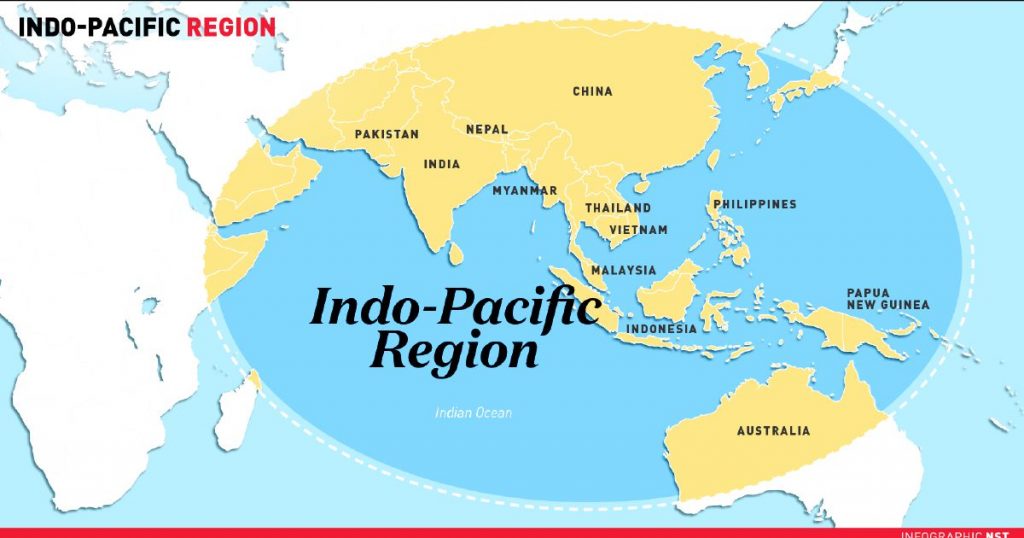
- India’s neighbourhood is no longer just defined by geography, but by strategic compatibility, as developments in the wider Indo-Pacific directly affect its security and prosperity.
- This dual approach signifies a mature and non-doctrinaire foreign policy that is willing to engage with rivals while simultaneously strengthening strategic partnerships.
- Thus, India is signalling that its policy is now not just about its neighbouring countries, but it is also about promoting an expanded network of partners aligned to India’s strategic autonomy and economic growth.
- The shift reflects a strategic evolution where India is positioning itself as a ‘net security provider’ in the Indian Ocean region and a key player in the larger Indo-Pacific, demonstrating that its regional policy is now deeply intertwined with its global aspirations.
India’s “Neighbourhood First” policy is one of the fundamental principles in India’s foreign policy behaviour, where establishing relationships with India’s immediate neighbours is a crucial pillar of Prime Minister Narendra Modi’s foreign policy agenda since he took office in 2014. The policy, which prioritises India’s immediate neighbours, aims to foster mutually beneficial, people-oriented regional frameworks for stability and prosperity. While its foundational principles remain constant, its application and dynamics have evolved significantly in response to shifting geopolitical landscapes. A recent case in point is PM Modi’s latest visits to Japan and China, which, while not a direct part of the ‘neighbourhood’ in the traditional South Asian sense, offer a crucial post-visit analysis of how India’s regional diplomacy is being recalibrated to address broader strategic challenges and opportunities.
Expanding the ‘Neighbourhood’
PM Modi’s recent visit to Japan was an indication of an even greater ‘extension’ of India’s ‘Neighbourhood First’ policy to an ‘extended’ neighbourhood in the Indo-Pacific. This partnership with Japan establishes a crucial alignment for India to balance its national interests in a regional context, as it works through the implications of China’s growing assertiveness. The India-Japan “Special Strategic and Global Partnership” has emerged as a key alignment for India to balance its regional interests, especially against the backdrop of China’s assertive rise. The agreements concluded during the visit (a large Japanese private investment into India and an ambitious human resource exchange program) reinforce a pattern of increasing collaboration economically (through investments) and technologically (through human resources).
India is signalling that its policy is now not just about its neighbouring countries, but it is also about promoting an expanded network of partners aligned to India’s strategic autonomy and economic growth. The discussions included high-tech sectors such as semiconductors, green energy and AI, which all reinforce India’s ambitions of leveraging both its demographic dividend and size of market with Japan’s technology to create a partnership in contributing to a rules-based order in the Indo-Pacific. This indicates a subtle yet significant extension of ‘Neighbourhood First’, where India leverages strategic partnerships towards reinforcing India’s position in its own region and beyond.
The China Balancing Act
In contrast, Modi’s visit to China, primarily for the Shanghai Cooperation Organisation (SCO) summit, was also an invaluable opportunity to view the complicated and often tense dynamics of India’s ‘Neighbourhood First’ policy with the most powerful neighbour. The bilateral meeting with President Xi Jinping, the first in many years, was an attempt to reset a relationship strained by border disputes and strategic competition. The discussions centred around: the necessity for “peace and tranquillity” on the border; and the two sides recognising that: they are “development partners and not rivals.” This pragmatic engagement clearly illustrates that India realises that it must counter Chinese influence in South Asia, while simultaneously coming to terms with economic and geopolitical realities, given that the two countries share a continent.
The visit reveals a central trend in Indian policy: a difficult and nuanced balancing act. On the one hand, India is developing closer partnerships and cooperative arrangements with developed partners, such as Japan, the US, and Australia (the Quad), to mitigate China’s assertiveness. On the other hand, India is attempting to keep lines of communication open with China so that engagement can help ameliorate the border situation and allow India to continue to explore areas of cooperation where their interests may align. This dual approach signifies a mature and non-doctrinaire foreign policy that is willing to engage with rivals while simultaneously strengthening strategic partnerships.
A Shift in Strategy
The post-visit analysis of both of these different visits demonstrates one of the most important contemporary changes to India’s ‘Neighbourhood First’ policy: a move away from a strictly South Asia-centred policy approach, to an Indo-Pacific one. India’s neighbourhood is no longer just defined by geography, but by strategic compatibility, as developments in the wider Indo-Pacific directly affect its security and prosperity. The policy is currently being used actively as a means of establishing a network of economic and security relations that push back against China’s Belt and Road Initiative and growing prominence throughout South Asia. The Japan and China visits also highlight the increasing emphasis of the ‘Neighbourhood First’ policy on economic diplomacy as a tool of foreign policy.
India seeks to leverage its growing market and economic opportunities to attract investment and create partnerships, which will not only be politically strategic but also economically profitable. This is a direct challenge to the notion of “debt-trap diplomacy”, which is often called a pillar of China’s regional engagement, by offering an alternative approach that is free of financial compromises and cooperation upon mutual benefit. The shift reflects a strategic evolution where India is positioning itself as a ‘net security provider’ in the Indian Ocean region and a key player in the larger Indo-Pacific, demonstrating that its regional policy is now deeply intertwined with its global aspirations. This evolution is critical for India as it seeks to maintain its strategic autonomy and secure its national interests in a multipolar world.
The Road Ahead
Looking ahead, the changing landscape of India’s ‘Neighbourhood First’ policy could be addressed in several ways. First, the policy will need to become more pliable in balancing bilateral relations with multilateral ones. While strengthening ties with Japan and the Quad is important, India will need to be careful not to diminish its own importance within regional organisations such as the South Asian Association for Regional Cooperation (SAARC) and BIMSTEC. Second, the policy will have to address the “trust deficit” with some of its smaller neighbours. The “big-brother” notion of India still exists in certain circles, and New Delhi will need to remain committed to non-reciprocal gestures, development assistance and sensitive diplomacy to counter this narrative.
Finally, the policy will need to be aligned with India’s developmental agenda at the domestic level. By attracting foreign investment from partners like Japan and using it for infrastructure development, India can strengthen its own economy, which in turn enhances its ability to project power and influence in the region. The visits to Japan and China were not just isolated diplomatic events; they were a clear manifestation of a more sophisticated and multi-layered ‘Neighbourhood First’ policy that is increasingly intertwined with India’s ‘Act East’ and broader Indo-Pacific strategies.
Hridbina Chatterjee is a final-year postgraduate student in International Relations at Jadavpur University, Kolkata. She has written for newspapers and think tanks, with interests in South Asian politics, India’s foreign policy, and the Indo-Pacific. Views expressed are the author’s own.
